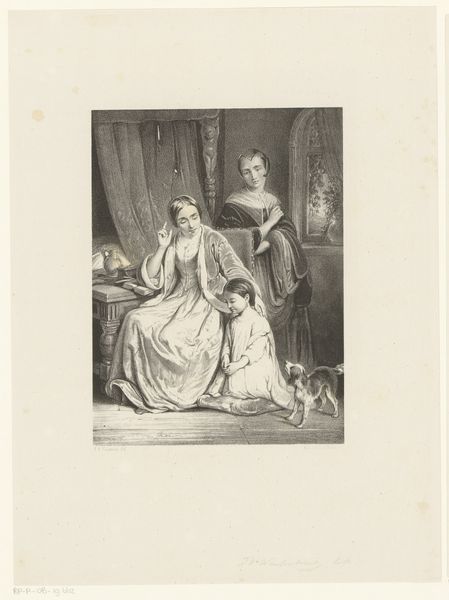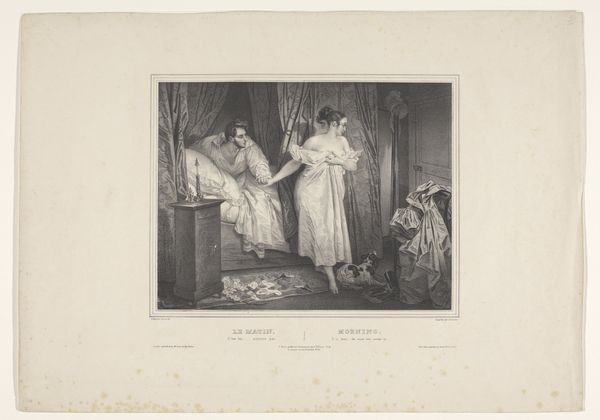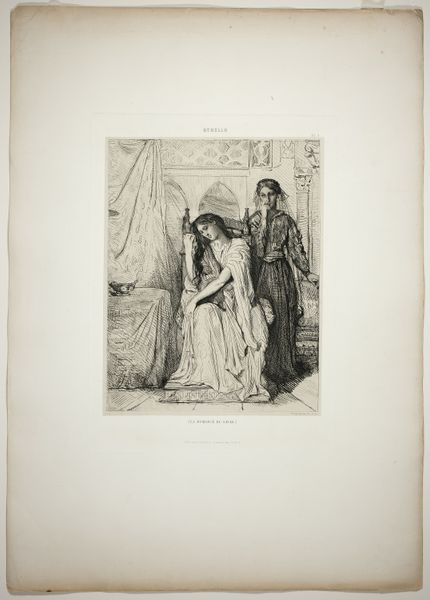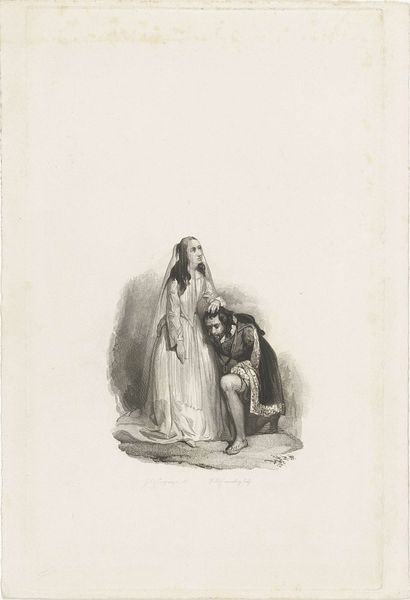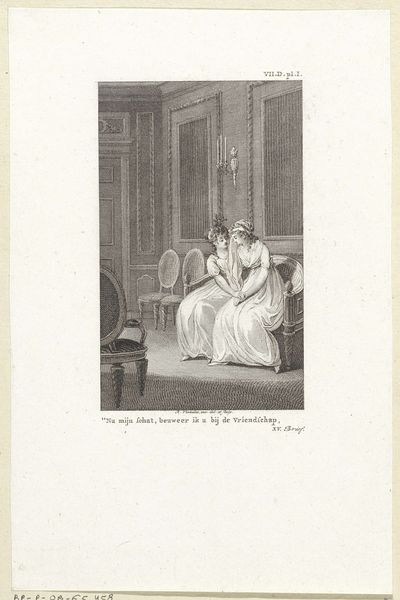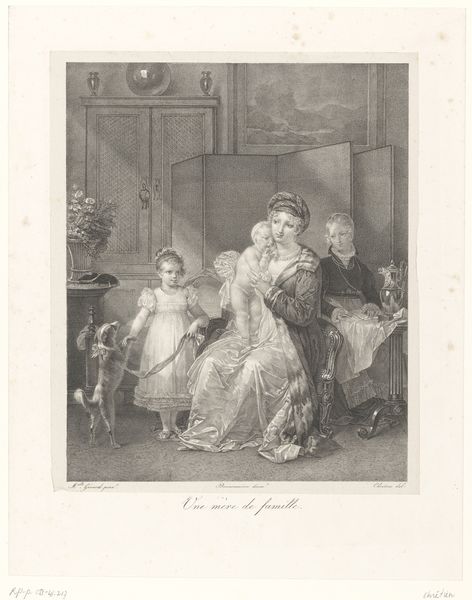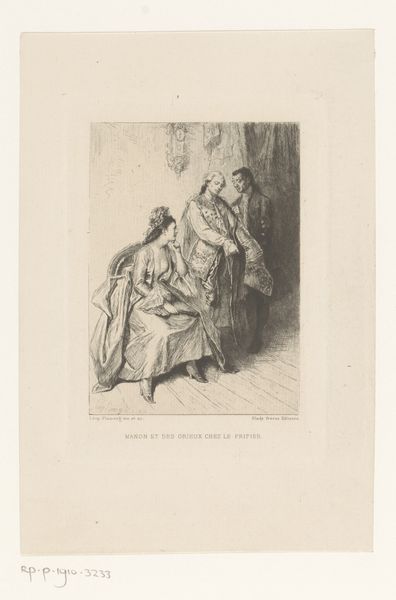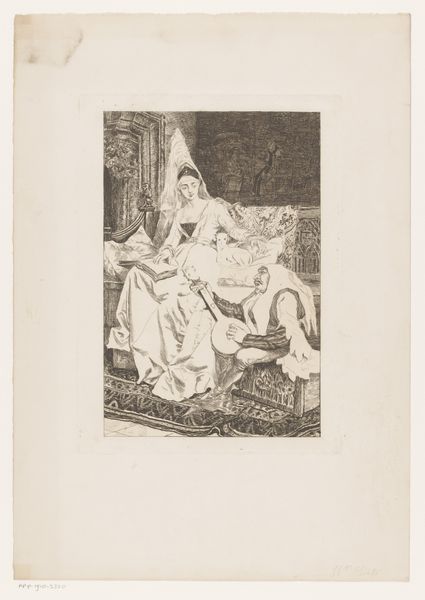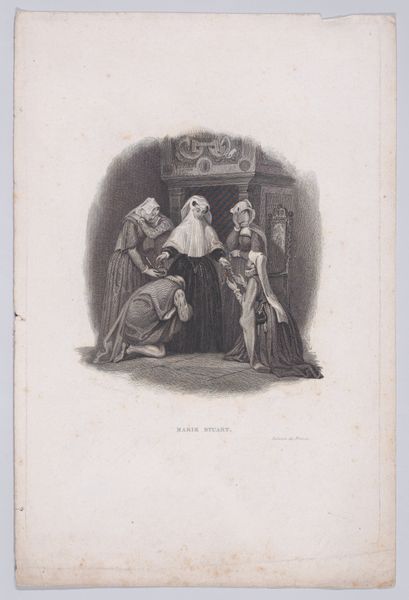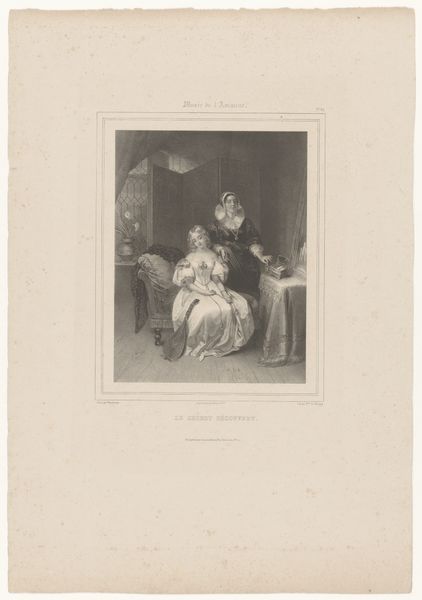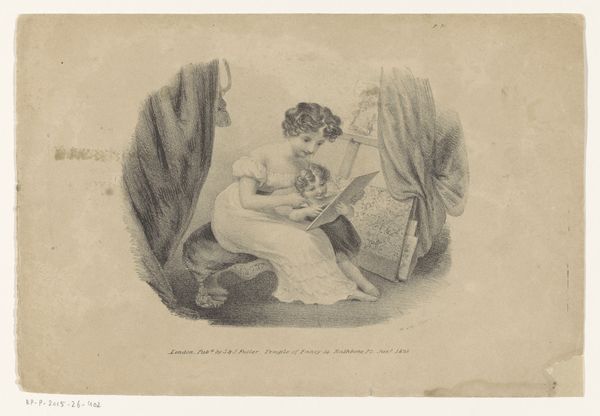
drawing, ornament, lithograph, print, ink
#
portrait
#
drawing
#
ornament
#
lithograph
# print
#
ink
#
romanticism
#
orientalism
#
portrait drawing
Dimensions: height 219 mm, width 287 mm
Copyright: Rijks Museum: Open Domain
Curator: Immediately, I'm struck by the sheer opulence of this print! Editor: Opulence, yes, though achieved through delicate lithography. We're looking at "Double Portrait of Queen Ranee and Prince Duleep Singh," dating between 1822 and 1863, attributed to Lazarus Gottlieb Sichling. The linear precision combined with shading effects is particularly noteworthy. Curator: The cascading jewels draw the eye, creating a palpable sense of richness despite the monochromatic palette. This focus is particularly telling from an Orientalist point of view, highlighting European fascination with South Asian luxury. Editor: Precisely. Note also the spatial dynamics: the Queen, seated and slightly elevated, suggests a maternal power, further articulated by the way her son is positioned – presented, really – to the viewer. This piece underscores how royal images projected not only power but also dynastic continuity, carefully crafted for audiences familiar with courtly representation. Curator: It's impossible to ignore the stark contrasts—the erect, almost rigid stance of the prince compared to the languid repose of the queen. The arrangement creates a dynamic tension, a semiotic interplay hinting at the burdens of expectation perhaps already weighing on him. Editor: And think of the impact on its contemporary viewers: Was this lithograph designed for Western European audiences, solidifying romanticized notions of "the Orient," or meant for internal circulation, reinforcing power structures within a specific social milieu? Its public role must be considered. Curator: From a formal perspective, observe how Sichling used ink to meticulously construct form. Note how subtle variations in line weight articulate volume in both the figures and ornamental components – creating depth. Editor: An effective visual strategy indeed – and crucial for translating notions of authority across geographical and cultural boundaries. It really makes you consider what public perceptions the portrait tried to create and cement. Curator: Examining the interplay between line, tone, and spatial arrangement is something I will remember when viewing portraits in the future. Editor: And considering both intention and context ensures a richer appreciation of art's multifaceted role throughout history.
Comments
No comments
Be the first to comment and join the conversation on the ultimate creative platform.
